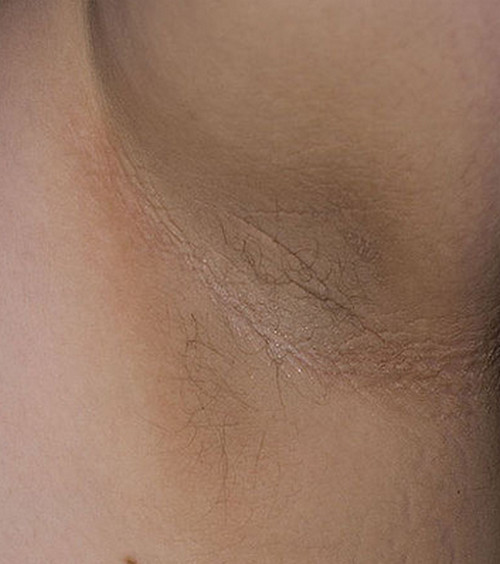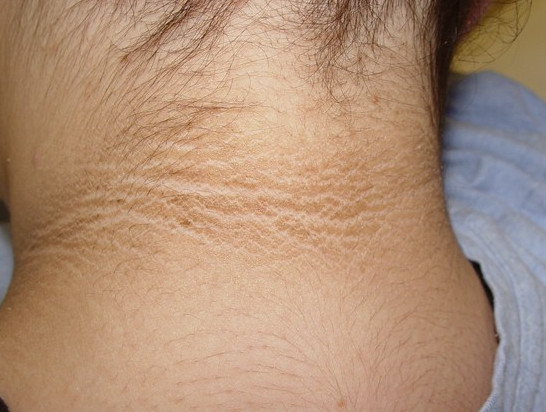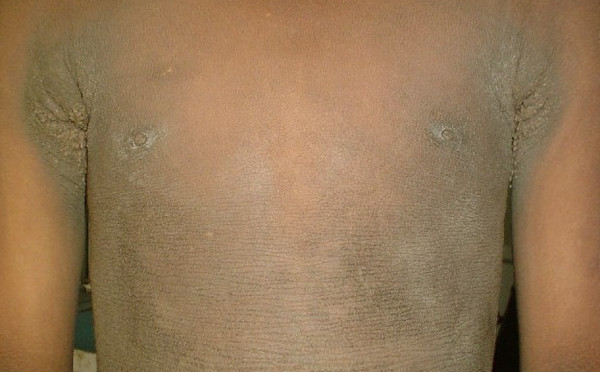What is Acanthosis Nigricans
Acanthosis nigricans is a condition where there is an occurrence of discoloration in the skin. This discoloration normally occurs in areas where there are folds, such as the folds in the side of the neck as well as the posterior folds. Moreover, it has been recognized that indeed, the condition highly predisposes children to develop diabetes.
As an added tidbit of information, the first recorded incident of acanthosis nigricans is dated back in the late 1880s in Germany. It was first observed by Unna and Pollitzer. Although in the earlier part of 1880s, a suspected case of acanthosis nigricans was discovered by Addison; however, he misdiagnosed it as a case of Addison’s disease. Moreover, in the early part of the 1900s, about fifty individuals were identified to have been affected by the disease with a tendency to develop internal cancerous growth.
Epidemiology
To date, the precise incident rate of acanthosis nigricans is still not known. However, the cancerous variation of the condition has a fewer incidence than the benign ones. Moreover, acanthosis nigricans has been found to be more common in individuals with darker pigments of their skin; however, the cancerous variation of the condition has no known partiality to any skin color or race.
Also, the condition (both the benign and cancerous ones) has no known partiality to gender as it occurs equally among both sexes. Acanthosis nigricans also has no specific age at which it occurs. The condition can appear at any stage of an individual’s life span; although, it is usually observed in the adulthood stage.
Causes of Acanthosis Nigricans
The exact cause of acanthosis nigricans has not yet been fully elucidated to date. The condition usually occurs at a young age, usually before an individual reaches the fourth decade of life. Moreover, the condition is highly linked with obesity or the condition where there is excessive accumulation of fat in the body that may pose significant health risks to an individual.
Other than that, acanthosis nigricans may also be a hereditary condition. In addition, the condition is also said to be caused by problems in the endocrine system such as Cushing’s syndrome, Acromegaly, Hyperthyroidism, Hypothyroidism and Diabetes Mellitus.
The most frequent etiologic factor associated with acanthosis nigricans is insulin resistance. When there is insulin resistance, the levels of insulin floating around the body will consequently increase. Due to this phenomenon, the excess insulin may accumulate in the skin resulting to skin hyperplasia or the anomalous augmentation of growth.
Pathophysiology
Basically, acanthosis nigricans may be predisposed by the factors mainly responsible for the propagation or increase in production of keratinocytes (main cell types of the epidermis) and fibroblasts in the dermis. Below, the pathophysiology of benign and malignant acanthosis nigricans will be further discussed.
Benign acanthosis nigricans
In the non-cancerous form of acanthosis nigricans, the condition may be instigated by insulin itself or the insulin-like growth factor that initiates the increase in production of cells in the epidermis. Other key players are receptors such as the fibroblast growth factor as well as the epidermal growth factor. In patients having excessive fats in the body, the insulin-like growth factor 1 has a very high tendency to increase, as a result the insulin’s capability to produce accelerated cell growth as well as cell differentiation, is also higher. This is because; the insulin’s high affinity to the insulin-like growth factor causes the increase in the growth of the cell and its differentiation.
Currently, there have been two identified classifications of the condition’s manifestations, which are namely the anomaly in the growth factor of the fibroblast and the syndromes associated with insulin resistance. Moreover, the three usual elements associated with the condition are craniosynostosis, hyperinsulinemia and excessive accumulation of fats in the body.
In addition, other causative factors of acanthosis nigricans are friction and perspiration as evidenced by its dominance in areas of the body where there is presence of folds.
Malignant Acanthosis Nigricans
A factor called transforming growth alpha has been cited as the most likely factor to cause the occurrence of cancerous forms of acanthosis nigricans. Evidences like normalization of the said factor’s level in the blood after the elimination or removal of the tumor in the body has supported the idea that indeed it may be the one responsible for the progression of benign acanthosis nigricans to malignant ones.
Extrinsic factors such as medications have also been cited as causative factors for malignant acanthosis nigricans. Medications, especially the ones that utilize parenteral routes may have the tendency to activate insulin-like growth factors in the injection site.
Moreover, there are a lot of disorders that are highly associated with acanthosis nigricans. Examples of these disorders are Acromegaly, Barter syndrome, Bloom syndrome, Dermatomyositis, Phenylketonuria, Pituitary hypogonadism, Rud syndrome, Wilson syndorme as well as Lupus erythomatosus among others.
Signs and Symptoms
Initially, the first clinical manifestation that can be observed in acanthosis nigricans is the darkening of the skin with accompanying thickening of the area. There may be itching and it can then progress to dark macules. Lastly, it may then develop into a very tangible plaque when touched. In malignant forms of acanthosis nigricans, these skin manifestations may appear before, on or after the tumor presentation. Moreover, in malignant acanthosis nigricans, the itching may be considerably higher.
As stated above, frequent locations of the condition are in areas of the body where there are folds such as the neck, groin and armpit; with the back side of the neck being the most frequent site in children. In addition, lesions of the condition may also develop in moist areas of the body such as the mouth and the mucosa of some parts of the gastrointestinal tract including the esophagus. In other cases, even the areola may be affected.
Types of Acanthosis Nigricans
There are nine known types of acanthosis nigricans, which will each be discussed below.
Obesity-related type
The obesity-related type is the most frequently occuring type of acanthosis nigricans so far. Lesions usually develop in older people than in younger ones. Although, not all may have resistance of insulin, it is usually common in this type and since it is obesity related, the symptoms may consequently disappear as the weight is trimmed down.
Syndromic type
As can be inferred from the name itself, this type of acanthosis nigricans is linked with a syndrome. For instance, there are two types of syndromes that are associated with acanthosis nigricans, which are namely the types A and B. The first type is associated with hereditary links, especially common in young women with abnormally elevated levels of testosterone. The second type, on the other hand, is linked with various conditions such as Hashimoto thyroiditis, Sjogren syndrome, Scleroderma and SLE among others.
Acral type
This type of acanthosis nigricans happens in individuals who are relatively healthy, other than, of course, their acanthosis nigricans condition. This type is mostly common in dark skinned individuals such as the African American race.
Unilateral type
This type of acanthosis nigricans is hereditary and is usually acquired through an autosomal dominant manner. In this type, the lesions may develop in various stages of an individual’s life span, may it be in the infancy or in the adulthood stage. Moreover, these lesions have a tendency to have a continuing growth before it stops to its optimal size.
Generalized type
This type of acanthosis nigricans is uncommon and has no known predisposition to cancerous acanthosis nigricans.
Familial type
This type of acanthosis nigricans is also usually uncommon and just like the unilateral type; it is usually acquired through an autosomal dominant manner. Moreover, the lesions usually develop from early childhood and usually stops during the teenage years.
Drug-related type
This drug-related acanthosis nigricans may be linked to the use of various medications such as corticosteroids, nicotine as well as insulin among others, with the nicotinic acid being the most frequently linked drug to the development of the condition. However, the drug-related acanthosis nigricans along with its associated lesions may disappear after the discontinuation of the related medication.
Malignant type
Obviously, the malignant type is the worst type of acanthosis nigricans that an individual could possibly have. Although there are a lot of possible associations with various carcinomas, the most frequently associated carcinoma is the ones that are in the gastrointestinal tract, especially gastric adenocarcinoma. Moreover, the mouth, including the lips may be severely affected.
Mixed type
As can be inferred from the name itself, the mixed type of acanthosis nigricans is characterized by a combination of two or more of the above-mentioned types.
Differential Diagnosis
Differential diagnoses should also be done to rule out other similar disorders such as Pellagra, Hemochromatosis and Addison’s disease among others.
Procedures and Tests
It may be helpful to perform tests to measure the level of glycosylated hemoglobin in the individual’s body, as well as, test for glucose tolerance. In some cases, a biopsy performed in the skin may be necessary as the need of it may arise. Moreover, it may also be necessary to test for the level of plasma insulin in the body to consequently discover or come into light the occurrence of insulin resistance in an individual.
Treatment for Acanthosis Nigricans
Medical Management
To date, there is still no routine treatment regimen for the management of acanthosis nigricans. Usually, the objective of most medical managements is to cure the causal or primary disease condition that leads to the development of acanthosis nigricans, in the first place. Moreover, the accompanying lesions in the condition usually do not pose a significant health risk and its management is solely for cosmetic matters only. However, the following may be helpful in the resolution of acanthosis nigricans:
- As stated above, obesity or the excessive accumulation of fats in the body is one of the main factors to the development of acanthosis nigricans. Hence, a healthy reduction of weight as well as healthy control of glucose intake may be helpful in the resolution of the condition.
- On the other hand, in the case of drug-related acanthosi nigricans, the discontinuation of the causative medications may be necessary in order to resolve the appearance of acanthosis nigricans.
- Experts also suggest the inclusion of fish oil in the diet of the patient, as it may help in the resolution of the generalized type of the condition.
- There are also topical creams that have posed promising results. Examples of these topical creams are keratolytics such as ammonium lactate, as well as depigmenting topical soluctions, usually in triple combination. The use of sunscreen in a daily manner may also help in the resolution of acanthosis nigricans.
- Aside from topical agents, there are also oral medications that posed promising results in the resolution of acanthosis nigricans. Examples of these oral medications are metformin, isotretinoin, as well as etretinate.
- Type A syndromic forms may also be treated with the utilization of metformin and contraceptives taken orally.
- Lesions may also be significantly reduced by using available laser therapies such as dermabrasion among others.
- For malignant acanthosis nigricans however, the first line of treatment is surgical intervention. The tumors are surgically removed. Moreover, cyproheptadine is usually used for the management of malignant types of acanthosis nigricans as it may hamper or hinder the liberation of tumor materials.
- Lastly, the utilization of Psoralen in combination with ultraviolet A may help relieving symptoms of malignant acanthosis nigricans.
Also, as acanthosis nigricans involve various systems in the body, like the endocrine system, a collaborative team effort may be necessary to achieve optimal management of the patient. Because of this, different specialists may be needed such as the family physician, dermatologist for the skin care, geneticist to determine familial or genetic links, oncologist for malignant cases of acanthosis nigricans and the endocrinologist for the management of endocrine signs and symptoms.
Patient Education
An integral part of the medical management for acanthosis nigricans is patient education. The patient should be informed that acanthosis nigricans is not a disease in itself, but a resulting condition of another causative disease. Proper diet and healthy reduction of weight should be included in educating the patient.
Prognosis
The malignant type of acanthosis nigricans have shown poor prognosis, with an estimated life span of two years upon onset of malignant signs and symptoms.
Acanthosis Nigricans Pictures

Picture 1 : Acanthosis Nigricans on axilla (on of the most common sites)

Picture 2 : Acanthosis Nigricans on neck (on of the most common sites)

Picture 3 : Acanthosis Nigricans on body

